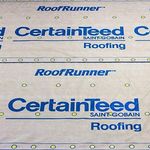Buying Guide for the Best Roofing Underlayment Materials
Choosing the right roofing underlayment material is crucial for the longevity and effectiveness of your roof. Underlayment serves as a protective layer between your roof deck and the shingles, providing an extra barrier against water, wind, and other elements. When selecting the best underlayment for your needs, consider factors such as climate, roof type, and the specific requirements of your roofing material. Understanding the key specifications will help you make an informed decision that ensures your roof remains durable and efficient.Material TypeThe material type of roofing underlayment is important because it determines the durability, water resistance, and overall performance of the underlayment. Common materials include asphalt-saturated felt, rubberized asphalt, and synthetic underlayment. Asphalt-saturated felt is traditional and cost-effective, suitable for moderate climates. Rubberized asphalt offers superior waterproofing and is ideal for areas with heavy rainfall or snow. Synthetic underlayment is lightweight, tear-resistant, and provides excellent protection in various weather conditions. Choose the material type based on your climate and the specific needs of your roof.
ThicknessThickness of the underlayment affects its durability and protective capabilities. Thicker underlayment generally provides better protection against water and physical damage. Underlayment thickness is usually measured in mils (thousandths of an inch) or in weight (pounds per square). For example, 15-pound felt is thinner and less durable than 30-pound felt. Thicker underlayment is recommended for areas prone to severe weather conditions, while thinner options may suffice in milder climates. Consider the typical weather patterns in your area when choosing the appropriate thickness.
Water ResistanceWater resistance is a critical spec because it determines how well the underlayment can prevent water from penetrating your roof deck. High water resistance is essential in regions with heavy rainfall, snow, or ice. Rubberized asphalt and synthetic underlayments typically offer superior water resistance compared to traditional felt. If you live in an area with frequent or heavy precipitation, opt for an underlayment with high water resistance to ensure your roof remains dry and protected.
UV ResistanceUV resistance refers to the underlayment's ability to withstand exposure to ultraviolet rays from the sun. This is important because prolonged UV exposure can degrade the material, reducing its effectiveness. Synthetic underlayments often have better UV resistance compared to asphalt-saturated felt. If your roofing project involves leaving the underlayment exposed for an extended period before the final roofing material is installed, choose an underlayment with high UV resistance to maintain its integrity.
Slip ResistanceSlip resistance is a safety feature that indicates how well the underlayment provides traction for workers during installation. A slip-resistant surface helps prevent accidents and injuries. Synthetic underlayments often have textured surfaces that enhance slip resistance, making them safer to work on. If safety during installation is a priority, especially on steep roofs or in wet conditions, select an underlayment with good slip resistance.
Temperature ToleranceTemperature tolerance indicates the range of temperatures the underlayment can withstand without losing its performance. This is important in areas with extreme temperature variations. Some underlayments can become brittle in cold weather or soften in high heat. Synthetic underlayments generally offer better temperature tolerance compared to traditional felt. If you live in a region with significant temperature fluctuations, choose an underlayment that can handle the extremes to ensure long-term durability.
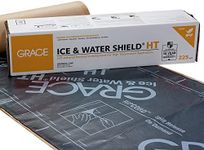

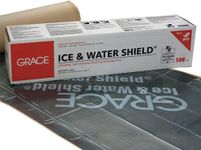
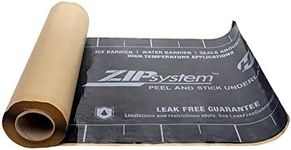


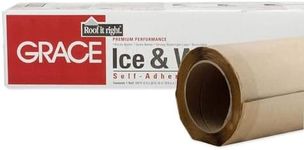
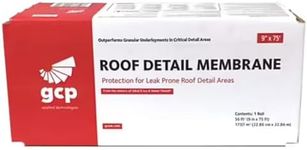






![The Good Stuff Heavy Duty Rug Tape for Carpet and Hardwood Floor [2" x 60yd] Rug Tape for Area Rugs on Carpet, Double Sided Carpet Tape for Tile Floors](https://images-proxy.bestreviews.guide/q9se3XDbJJUgS7yiVeWCt5ZOjfY=/0x150/https://m.media-amazon.com/images/I/51ZWgqzwqCL._AC_CX679_.jpg)
